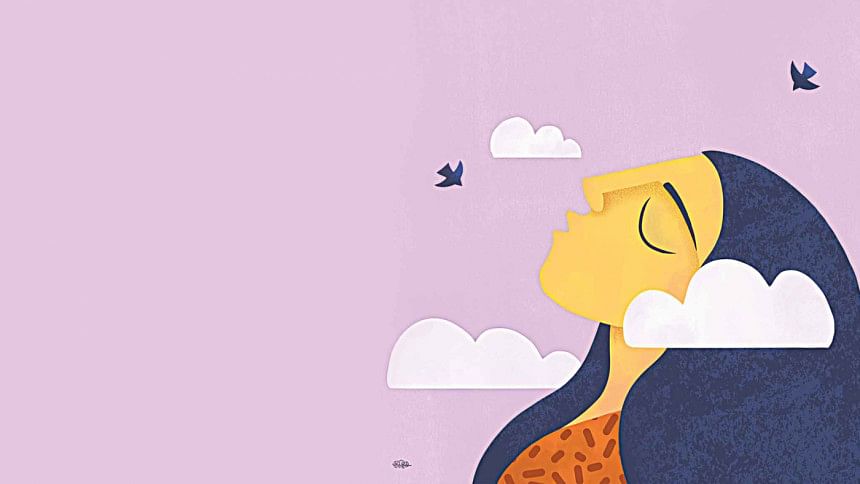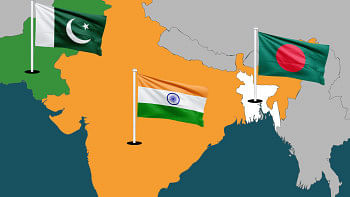Feminism in 2021: The Ideology vs The Aesthetic

Every year, during International Women's Day (IWD), lifestyle brands around the globe centre their marketing around women and their necessities. Popular brands here in Bangladesh are no different. Last year, we saw a brand of soap host a much-televised women's day campaign on March 8th. Their campaign featured models, bloggers, and female entrepreneurs.
The campaign was well shot and well presented, and ironically lacked the feminist spirit.
The women featured in the campaign all looked the same: conventionally fair, dressed in glamorous, non-functional attire. They all sit still, look pretty, speak gracefully and never do any heavy lifting. They all come from a place of privilege and do not speak their mind. As the video progresses, you come to realise that they're only there because a brand has a business to promote.
So, is that what we're celebrating? The exploitation of the feminist movement?
Read on as I break down the feminist movement for you, so you can decide for yourself.
FIRST WAVE FEMINISM
Feminist ideals have been around since the 15th century. It can be deduced from the works of historians that Christine de Pizan, a poetess at the court of King Charles VI of France, was quite possibly the first person to reflect on feminism.
The ideology only grew from there onwards, with the advocacy of Mary Wollstonecraft, Mary de Gournay, and many more.
The feminist movement itself kicked off in the 1850s, with the women's suffrage parades. Suffragettes took to the streets to demand women be granted the same voting rights as men. During this period of feminist activity, women demanded equality in mostly legal matters such as owning property, being able to cast votes and choose professional fields of work, having the rights to child custody in divorce proceedings, and so on. Notable activists headlining the rise of "First Wave" feminism were Dorothy Day, Sojourner Truth, Jane Addams, and Elizabeth Blackwell.
All white women, hailing from blue-collar households.
First Wave Feminism came with double standards, and rejected the idea of intersectionality. Only privileged, white women's accounts were heard and seemingly taken into consideration.
SECOND WAVE FEMINISM
The Feminine Mystique was published. The non-fiction by Betty Friedan challenged and argued against the conventional, patriarchal ideas of femininity.
Women of colour, namely bell hooks and Audre Lourde, finally found their voice and joined the feminist movement. The discriminatory air of the First Wave Feminism had finally begun to dissipate.
The 1960s brought in new ideas and objectives from liberal and radical feminists. Women's demands moved past enfranchisement and focused on issues such female sexuality, domestic violence, rape, and women's reproductive rights.
Post World War II, the feminist movement branched into two different sections: "Radical feminism" and "Liberal feminism". Liberal feminists fought to reform federal legislation to cater to the diversification of women's roles in the job sector. The liberal feminist movement was led primarily by activists Gloria Steinem and Betty Friedan. Radical feminists drew from their experiences in radical protests (mostly during the civil rights movement) and directly attacked the ingrained patriarchy in workplaces, bringing issues such as sexual harassment to public attention. The radical feminist movement was led primarily by activists Casey Hayden and Mary King.
THIRD WAVE FEMINISM
By the 90s, the feminist movement had gained massive traction around the globe. Global feminism began to take hold due to efforts made by the UN. The Economic and Social Council (ECOSOC) within the UN, had formed a Commission on the Status of Women in 1946. In the 90s, the council worked towards the development of female empowerment all over the world, encouraging the inclusivity of women from all socio-economic classes, ethnicities, and nationalities.
"Third wave" feminists sought to restructure the ideologies preached by "Second wave" feminists in an effort to eradicate the flaws in their predecessors' perspectives. Rebecca Walker is considered to be a pioneer for the third wave of the feminist movement. Walker introduced "intersectionality", the dismissal of bias against metrics such as religion, race, sexuality, and ability. This resulted in the definition of feminism broadening to include "transfeminism" and "postmodern feminism".
The Third wave dealt primarily in matters involving sexual liberation, violence against women, and reproductive rights involving access to contraception and the choice to abort.
Punk subculture came into effect with the introduction of "riot grrrl". Ideas surrounding "self-sufficiency" and "self-reliance" were popularised by punk rock musicians.
FOURTH WAVE FEMINISM
In the 2010s, social media platforms collectively became the defining factor in our lives. If a subject has found validation on social media, it has then unofficially been declared as an issue worthy of global attention.
The feminist movement came to discover new meaning amongst the netizens of the 21st century. The "Fourth wave" in the feminist movement began developing from beliefs rooted in intersectionality and with a focus resting solely on women's empowerment in different sectors. Social media aided marginalised groups in finding their voices, by providing them with the means to be heard faster and throughout the world.
Key events in Fourth wave feminism include actress and activist Emma Watson's "HeForShe" UN campaign, the #MeToo movement carried out on social networking site Twitter, and the "Time's Up" campaign hosted by women's rights activists and popularised by celebrities.
HOW IWD CAME TO BE
International Women's Day was first declared by the Socialist Party of America, during First Wave Feminism, and went on to gaining momentum internationally, beginning with the efforts of the leader of the Women's Office in German Social Democratic Party, Clara Zetkin.
In the 70s, IWD was first recognised and celebrated by the UN, and then integrated with the rest of the world's global and historic events.
From what history tells us, IWD has always been around to celebrate the achievements of women in various fields of work and education. The day is celebrated in accordance with the demands made and the rights claimed by women who struggled with the absence of equality in the society.
HOW IWD HAS BEEN TREATED IN RECENT TIMES
Thanks to social media, daily lives for everyone begin with a quick scroll through their notifications. Every year on March 8, a quick scroll-through like this one usually reveals various lifestyle brands using the aforementioned event to their own advantages. We come across marketing schemes centred on the spirit of International Women's Day, feminism, which effectively reduces a centuries-old movement to a mere seasonal trend.
According to history, the feminist movement has strived long and hard to attain diversity in its essence. The marketing campaigns that we come across on social media might lead you to believe otherwise.
Here's where Bangladesh stands on feminism and the celebration of International Women's Day:
As a country consisting primarily of conservative and patriarchal communities, Bangladesh has just begun to grasp the concept of feminism. We have just about managed to adhere to groundwork laid down by First Wave Feminism, while remaining ignorant of inclusivity.
Intersectionality holds no meaning in the IWD campaign mentioned in the beginning of this article. The campaign limits its acknowledgement of women's achievements to only privileged women. Their narrative is one-sided and blurs out the plights of the marginalised groups. How often have you seen trans-women, queer individuals, the women who make up our domestic help, the women employed in the garments sector or the sex industry of Bangladesh, being given a platform to bring their struggles to light?
Is the feminism we're seeing in accordance with the ideologies laid down by its pioneers?
Perhaps it is sometimes. A handful of IWD campaigns make an attempt to include narratives of women from different walks of life. The women featured in those small-scale campaigns have a lot to say and don't shy away from doing so. That being said, even those campaigns have far to go in terms of intersectionality.
International Women's Day came to fruition because of the feminist movement, because of collective efforts put in by working-class women. It's imperative to honour the spirit of the working class. It's important to acknowledge the contributions of every single woman in the working class, not just a selected few.
Rasha Jameel is an overzealous Ravenclaw who often draws inspiration from mundane things such as memes. Send her your memespirational thoughts at [email protected]

 For all latest news, follow The Daily Star's Google News channel.
For all latest news, follow The Daily Star's Google News channel. 



Comments